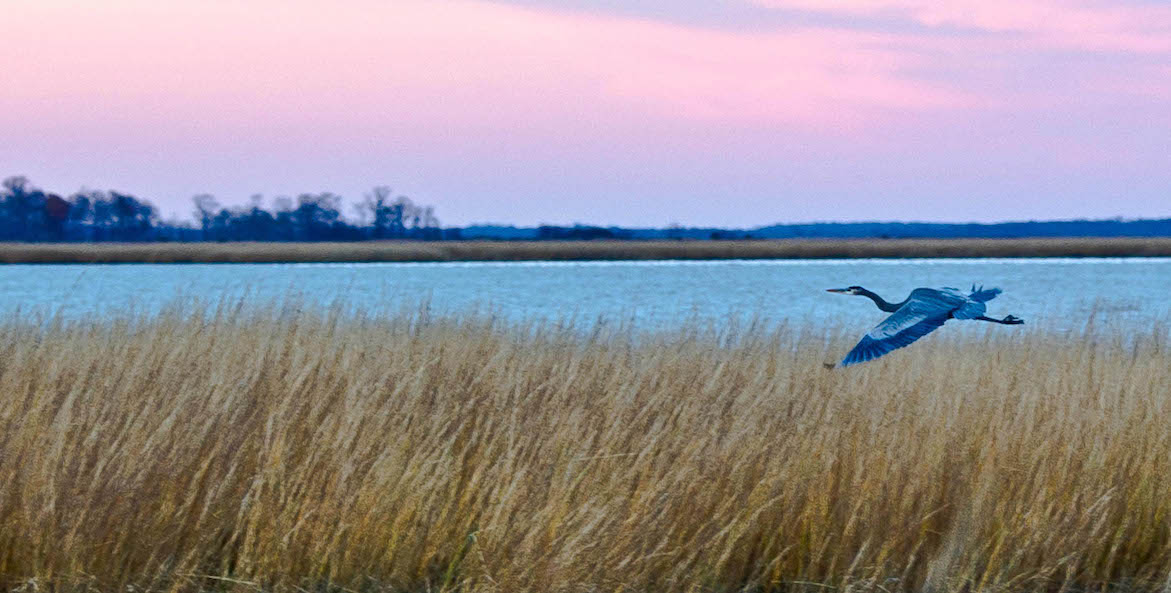Fostering a healthy habitat—from the hardwood forests of the Appalachian Mountains to the saltwater marshes of the Bay—is vital to restoring the health of the Chesapeake Bay watershed and the life that depends on it.
That is why we celebrated late last year, when Congress established a new fish and wildlife program here in the Chesapeake Bay watershed—the Chesapeake Watershed Investments for Landscape Defense (Chesapeake WILD) program. Signed into law in October 2020, Congress has directed the US Fish and Wildlife Service to develop and implement a new non-regulatory grant program that will expand the services’ capacity to restore fish and wildlife habitat and provide recreational opportunities for people throughout the watershed. This new program will support progress towards Chesapeake Bay watershed restoration commitments.
The Chesapeake WILD program is designed to support local restoration efforts that improve the health of our streams, rivers and the Bay as well as the aquatic life that calls them home. Throughout the Chesapeake Bay watershed are iconic, yet vulnerable species that help shape the identity and culture of our communities. Aquatic life in the rivers and streams face incredible pressure due to compounding threats to their delicate ecosystems.
The newly established Chesapeake WILD program allows the federal government to invest $15 million annually. This funding will support local partners with on-the-ground restoration work, aimed at restoring and protecting fish and wildlife habitat. The goals of this program are guided by the Chesapeake Watershed Agreement. Priority focus areas include restoration of riparian forest buffers and tidal and non-tidal wetlands, improving stream health and fish habitat, and removing barriers to fish migration in freshwater systems.
Let’s explore some of the benefits of this new program:
Restoring Freshwater Streams
There are 50 major rivers and streams that drain into the Bay each day. Stormwater runoff from farmland and urban and suburban areas wash nutrients into our streams and rivers, and eventually into the Bay. This runoff leads to excess nutrients—including nitrogen and phosphorus—that harm wildlife and plants throughout the watershed.
The Chesapeake WILD program is designed to support the installation and maintenance of best management practices such as forested riparian buffers—which support the health of aquatic wildlife while also providing water quality benefits.
Installing and restoring forested buffers—which are rows of native trees, shrubs, and grasses—along streams and rivers helps capture and filter pollution before it enters our waterways. Forested buffers also provide important habitat for wildlife and aquatic species and keep rivers cool in the summer. This benefits aquatic wildlife and plant species, including the iconic brook trout and Eastern hellbender.
Restoring Wetlands
There are roughly 1.5 million acres of wetlands in the Bay watershed—whether tidal or inland, permanent or intermittent—that are a critical component of the protection and restoration of the Bay and are home to an incredible diversity of wildlife. Thousands of aquatic species thrive in wetlands, from small insects and invertebrates, fish and shellfish that depend on wetlands as nursery and spawning habitat, and waterfowl that travel through our region on their annual migrations. By providing irreplaceable habitat for fish, native wildlife, and migratory birds, wetlands support the region’s $65 billion outdoor recreation industry and the more than half a million jobs it provides.
Unfortunately, wetlands face many threats throughout our watershed—from pollution, development, climate change, and, for some wetlands, recent loss of federal protections.
The Chesapeake WILD program is designed to invest in local efforts to restore our regions wetlands—both tidal and non-tidal, and ensure these vital habitats continue to filter nutrients and provide essential habitat to the creatures that make our watershed and Bay iconic.
Funding Directed to Local Partners
A cornerstone of this non-regulatory program will be the grant funding it provides to on-the-ground restoration throughout the watershed. Chesapeake WILD will provide funding and technical assistance and bolster local efforts to restore fish and wildlife habitat. That means more capacity for local restoration organizations to design and install critical conservation practices that will benefit wildlife, improve water quality, and enhance watershed recreation.
Funding is not guaranteed for this program, however. Congress and the president must include funding as part of their annual funding priorities.
Katie Morgan, Federal Outreach and Advocacy Manager
Issues in this Post
Wetlands Protection Advocacy Habitat Loss Wetlands Protection CBF at the Federal Level



